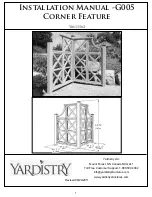
- 15 -
EN
Do not fill the mixing bowl beyond the
maximum fill mark! The maximum fill mark
applies to powders and liquids in their un
-
mixed states.
Attempting to mix small quantities in large
bowls will result in inadequate mixing.
TIP:
Only mix the same type of material in a given bowl.
Residue form previous mixing processes can have a
negative influence (e.g., silicon fails to harden, etc.).
We recommend a separate bowl for each type of
material (plaster, investment, silicon).
1. Select an appropriate size mixing bowl.
2. Using a spatula, lightly mix the materials together
(Figure 18).
3. Install the appropriate blunger (Figure 19).
Make sure the bowl rim (Figure 20a) and
cover rim (Figure 20b) are clean!
4. Couple the mixing bowl to the unit (Figure 21). Do
not release the bowl until it stays in place by itself.
>>> Indicator outside the red range on the scale
(Figure 22a)!
The motor should start automatically and
run briefly when the bowl is inserted. The
unit is equipped with an automatic coupling
aid that locks the blunger to the motor shaft
when the bowl is inserted.
5. Vacuum generation starts automatically.
6. Wait until sufficient vacuum has been created.
7. Start the mixing process
>>> Press the control knob (Figure 22b).
The unit will beep when mixing has been com
-
pleted.
8. Remove the mixing bowl
>>> Press the control knob (Figure 22b). The bowl
will be released in a few seconds.
Hold the bowl!
5.4 Interrupting the Mixing
Process
1. Stop the mixing process
>>> Press the control knob once (Figure 22b).
The unit will beep.
2. Remove the mixing bowl
>>> Press the control knob again (Figure 22b).
The bowl will be released in a few seconds.
Hold the bowl!
In case of a power failure or if the unit is
switched off, the bowl will be vented and be
uncoupled.
When power is restored or the unit is again
switched on, the mixing motor WILL NOT
automatically restart itself.
5.5 Setting the Mixing Time
(Figure 17)
The mixing time set at the control knob (F) is shown
on the display (C). The mixing time can be adjusted
in 5-second intervals at any time – even during the
mixing process itself.
• The mixing time set prior to the start of a mixing
process is saved.
• If the mixing time is changed during the course
of the mixing process, it is not saved and only
applies to the current mixing process.
5.6 Setting the Mixing Speed
(Figure 16)
The mixing speed is adjusted with the adjusting knob
(D). The speed can be adjusted at any time – even
during the mixing process itself.
5.7 Setting the Vacuum
(Figure 23)
You have the option of individually adjusting the inten-
sity of the vacuum by using the adjusting knob (B).
+ Higher vacuum (greater pressure difference
between the pressure in the bowl and the am-
bient air pressure).
-
Lower vacuum (less greater pressure differ
-
ence between the pressure in the bowl and the
ambient air pressure).
Vacuum intensity can also be changed during the
mixing process itself.
TIP:
Tests with various investment materials have shown
that the best mixing results (smooth, homogene
-
ous casting results) are obtained at the maximum
vacuum setting.
As a rule, this also applies to plasters.
In individual instances, independent tests have
shown that – under extremely high vacuum – the
partial pressure in the mixing bowl can sink to a
point where bubbles due to boiling can form in cer-
tain plasters (e.g., those containing volatile oils).
Should you observe this phenomenon in the plas-
ters you employ, we recommend first drawing the
air out of the mixture for 20 seconds at maximum
vacuum pressure, then reducing the vacuum setting
to 80-90% during subsequent mixing.
6. Cleaning / Maintenance
Always unplug the unit from the wall outlet
before beginning any cleaning or mainte-
nance tasks.
The
Twister venturi
mixing unit is practically mainte
-
nance-free.
Nonetheless, the inlet filter and the seals should be
cleaned regularly as part of a preventative mainte-
nance programme.
Summary of Contents for 1824-0000
Page 3: ...0 3546 0 394 inch 1 3 2 4 5 6 7 8 9 10 A E D C B F 11 L M N J H G K 12...
Page 4: ...14 15 16 17 18 19 a b 20 21 a b 22 23 24 a 13 b...
Page 5: ...a b 25 26 27 28...
Page 6: ......
Page 38: ...38 ES...
Page 45: ...45 RU 14 EIN AUS 6 4 6 4 Venturi 6 1 6 3 6 2 5 7 4 5 7 2 4 6 1 8A 6 4 4 5 7...
Page 46: ...46 RU...
Page 52: ...52 ZH...
Page 58: ...58 JA 14 6 4 6 4 Venturi 6 1 6 3 6 2 5 7 4 5 7 2 4mm 6 1 A 6 4 4 5 7...
Page 64: ...64 KO 14 6 4 6 4 6 1 6 3 6 2 5 7 4 5 7 bar 2 m 4 mm 6 1 8A 6 4 4 5 7 bar...
Page 69: ......
Page 70: ......
Page 71: ......
















































